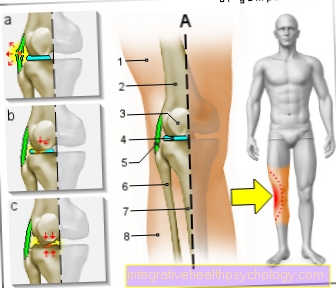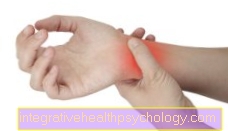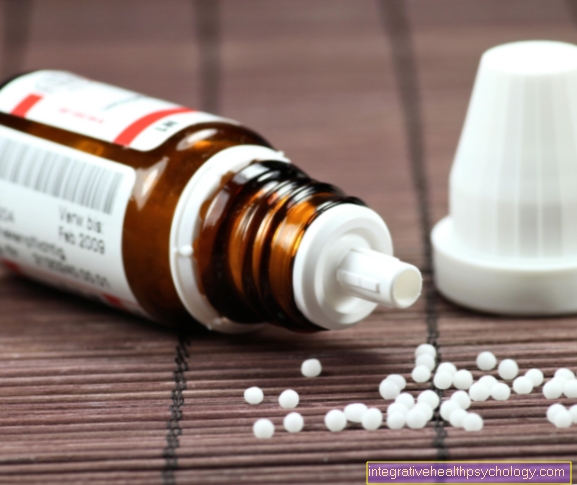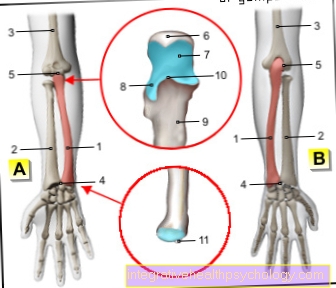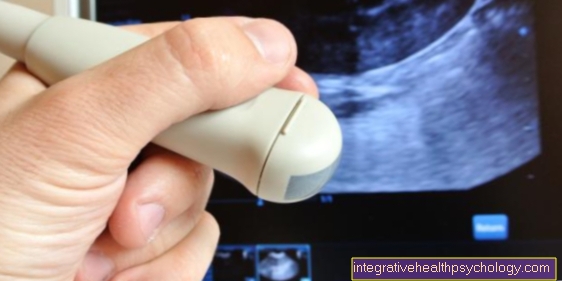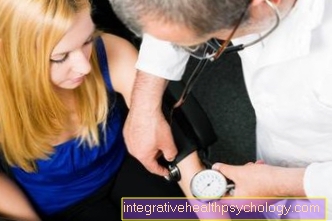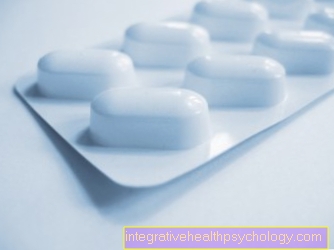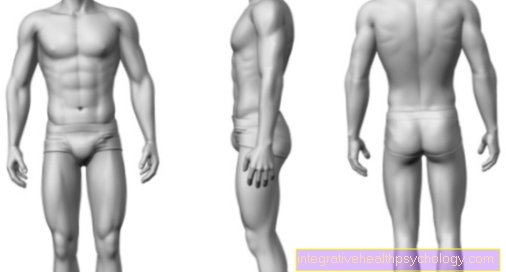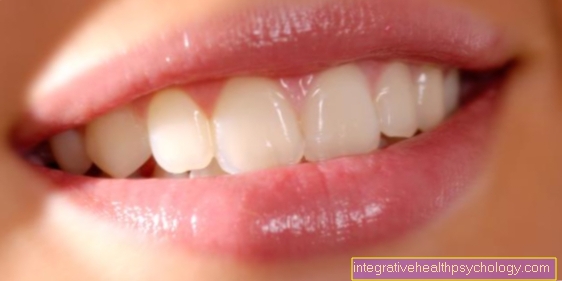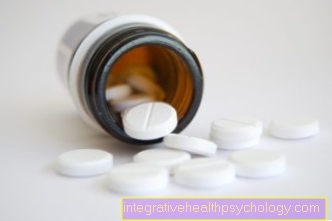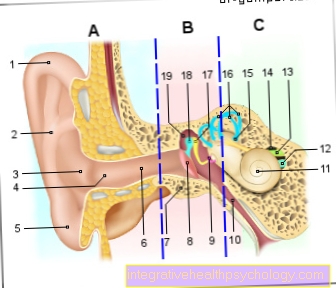Refobacin®
introduction
Refobacin® is an antibiotic cream produced by HERMAL Kurt Herrmann GmbH & Co, which is used against superficial infections with various germs. Refobacin® can only be obtained from the pharmacy upon presentation of a prescription and is not freely available.
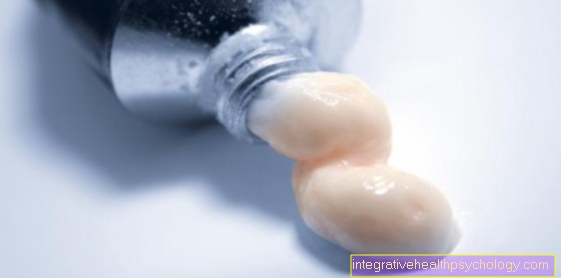
The cream is always available with the same strength of 1 milligram per gram of cream in different pack sizes from 5 grams to 100 grams of cream.
The antibiotic cream can act against many on the surface bacteria caused infections can be used, whereby the typical spectrum of Refobacin® use is mainly bacterial Conjunctivitis, Corneal inflammation, a Stye on the eye, open and infected wounds, purulent rashes such as Hair follicle inflammation up to abscess or Pressure ulcer („Lying sore“) Includes.
The most important bacteria, which often cause the superficial purulent infections, are the so-called Streptococci (heap-shaped bacterial colonies) or the Staphylococci (rod-like bacterial colonies) or also Enterobacteria. Since antibiotics are effective against bacteria, a cream with antibiotics is the treatment of choice for purulent skin infections.
What is Refobacin®?
Refobacin® contains the antibiotic gentamycin. Gentamycin is an antibiotic from the group of so-called aminoglycoside antibiotics. This group of antibiotics in turn belongs to the broad spectrum antibiotics and is particularly effective against the germs mentioned above.
Broad-spectrum antibiotics are antibiotic active ingredients that kill a very wide range of different pathogens. Gentamycin works against bacteria by penetrating the bacterium and disrupting protein production. Like a human cell, a bacterium with defective proteins can no longer live and dies.
The great advantage of Refobacin® is that it can be used as an ointment. This type of application avoids the many, sometimes serious, side effects that can occur when gentamicin is taken as a tablet or administered directly into the vein. In addition, applying it to the affected area gives a very high concentration of gentamicin.
In addition to the active ingredient gentamicin, it also contains petroleum jelly, various alcohols, water, silicon oxide and other additives that are important for consistency and effectiveness.
Read more on this topic under Gentamycin
application
Refobacin® as a cream should be about two to three times a day should be applied thinly to the affected skin areas, unless otherwise prescribed by the doctor or pharmacist. If the wound is bandaged and should continue to do so, it is advisable to apply the cream to the clean compress and then place it on the wound. This saves you from getting your finger into the wound and possibly also carrying germs there. A dressing change is then only necessary once a day.
The duration of use should be limited to a few days.
Refobacin® and children
As with so many other drugs, there are no more detailed studies of the side effects and consequences of treatment with Refobacin® in children. For this reason, it is currently being used on children not recommended.
Refobacin® during pregnancy and breastfeeding
If Refobacin® gets into the body, for example when used on large areas of skin, a measurable amount of gentamicin can also get into the circulation of the unborn child and cause side effects. Because of this, it should In the first third during pregnancy entirely on Refobacin® waived and in the two following thirds also only in emergency Refobacin® can be used.
The same applies to breastfeeding. Measurable concentrations of gentamicin can pass into breast milk, which is why weaning is urgently recommended from the time you use Refobacin®.
Contraindications
Refobacin® must not be used if you are hypersensitive or even allergic to gentamicin or another active ingredient from this group, e.g. Neomycin reacts. Refobacin® should only be used if instructed by a doctor. It is not effective for every skin disease and should definitely not be used for burns.
Side effects
By using Refobacin® as a cream, the side effects that can occur when taking Refobacin® in the form of tablets are very rare. Of course, side effects cannot be completely ruled out. Skin reactions such as redness, burning or itching can occur on the affected area.
If too large amounts of gentamicin get into the body, side effects can occur that otherwise only result from taking tablets. The most serious are here Balance disorders or Hearing or kidney damage. Changes in blood pressure, dizziness, balance disorders or headaches are less threatening.
Due to the high rate of absorption in the body, Refobacin® is also not suitable for use on the eyes or on mucous membranes.
Please also read our article on this Antibiotic side effects
What else should you watch out for?
Refobacin® should only be taken for a period of up to one week. If there is no improvement after this time, you should visit the doctor again, as the germs can be resistant to gentamicin. Then a change of the antibiotic is necessary.
If the next antibiotic also fails, it makes sense to use a so-called one Antibiogram to create. Here, a swab of the affected skin area is examined to determine which antibiotic the germs respond to.




